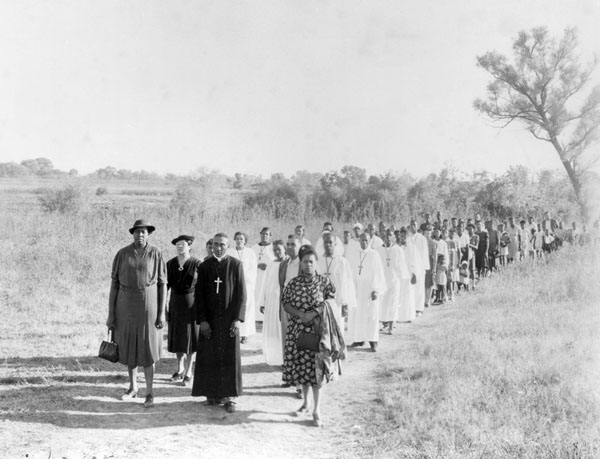“In conjunction with its exhibit of Jacob Lawrence’s Migration paintings, MOMA is offering a noteworthy film program, A Road Three Hundred Years Long: Cinema and the Great Migration (through June 12),” begins the New Yorker‘s Richard Brody. “It features the work of several black filmmakers who themselves moved North in the early 20th century, and who made the transition their subject.” Brody writes about the work of Oscar Micheaux and argues that “novelist Zora Neale Hurston’s film work is one of the great revelations of MOMA’s series…. Between 1927 and 1929, she returned to the South to study black residents’ customs and culture. Equipped with a 16-mm. movie camera, she filmed ‘fieldwork footage’ (June 9-10), depicting them at work, at school, and at leisure. Though her motives were anthropological, her results are poetic. Hurston’s visions of a baptism in deep water foreshadow the ecstatic imagery of Julie Dash’s 1991 feature, Daughters of the Dust (screening June 7-8), which dramatizes the 1902 departure of Gullah island residents for Northern cities.”
For J. Hoberman, writing in the New York Times, the series’ “most singular work” is The Blood of Jesus (1941), “a gospel-documentary-ethnographic melodrama, written and directed by Spencer Williams, probably best known for playing one half of Amos ’n’ Andy a decade later on television. One of the most visionary movies ever produced in America, this 57-minute debut feature is a raw and visceral morality play that represents the life of the soul with startling literalism: A great cross illuminates the heavens, the Devil drives a flatbed truck, and God’s angels patrol the crossroads…. Although The Blood of Jesus may not have seemed so to its original audiences, this is a movie whose long takes, homemade mise-en-scène and stark ‘artless’ qualities bring it close to documentary—a quality underscored by Thom Andersen’s Juke: Passages From the Films of Spencer Williams, a half-hour film commissioned by MoMA for the series.”
“Juke finds Andersen again working to redirect the viewer’s ‘voluntary attention,’ as described in his groundbreaking Los Angeles Plays Itself (2003), asking viewers to ‘appreciate fiction films for their documentary revelations.'” Nick Pinkerton, writing for Artforum: “Here he has made the parlors, pool halls, Texas honky-tonks, model suburbs, and city streets that form the backdrop to Williams’s narratives the central players. In reducing Williams’s films to their composite elements of ‘sociological interest,’ the strict materialist Andersen strips them of the spiritual element that presumably drove Williams himself to make them—but he also keeps with the goals of A Road Three Hundred Years Long: Finding the real story written in the margins of the official document.”
Update, 6/6: For Film Comment, Nick Pinkerton talks with Thom Andersen about Juke and Spencer Williams: “I was interested in his films for their documentary qualities, and I had the idea that I could present that aspect of the films and it would be a significant document of black life, black middle-class life, at the time and place that these movies were made: central Texas in the 1940s.”
For news and tips throughout the day every day, follow @KeyframeDaily. Get Keyframe Daily in your inbox by signing in at fandor.com/daily.




